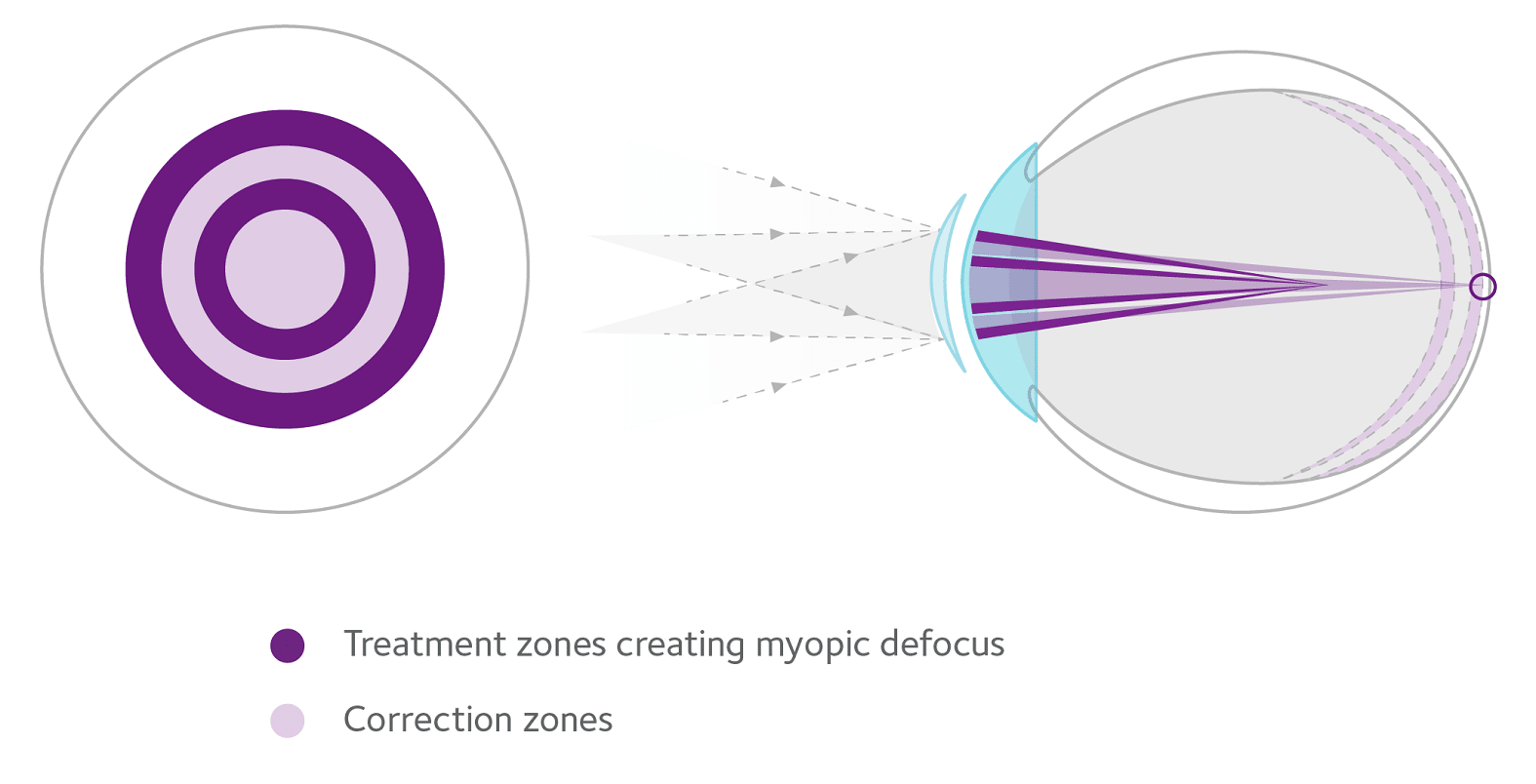 |
| While the peripheral add multifocal contact lenses were effective in slowing down myopia progression, the effect was a bit weaker than atropine or ortho-K in a recent meta-analysis. Photo: Coopervision. Click image to enlarge. |
In a new meta-analysis, researchers aimed to compare the efficacy of peripheral add multifocal soft contact lenses (excluding bifocal designs) with single-vision contact lenses or spectacles in controlling myopia progression and found that the multifocal option was more effective in reducing refractive progression and axial growth. A total of 11 articles comprising 787 participants were included in this meta-analysis.
Peripheral add multifocal lenses did not affect high-contrast distance logMAR visual acuity but resulted in a significant decrease in low-contrast acuity at that focal length. The incidence of adverse effects was low and there was no significant difference in the frequency of all reported adverse events between multifocal and single vision contact lenses.
The intervention “exhibited promising outcomes in controlling myopia among school-aged children, with effects sizes of 0.20D in decelerating myopia progression and 0.08mm in reducing axial elongation, respectively,” the researchers explained in a recent paper on the work. “These values were marginally smaller than those reported in other studies involving orthokeratology and atropine.”
Multifocals exhibited a weaker effect in controlling myopia than orthokeratology, however. “For practitioners dealing with a child who requires myopia control, it is recommended to consider the use of orthokeratology lenses or low-concentration atropine,” the authors explained. “In certain cases, multifocal soft contact lenses could be recommended.”
Regarding the significant decrease in low-contrast logMAR visual acuity at distance, visual performance with peripheral add multifocal contact lenses was slightly worse at nighttime compared to daytime.
“Kang et al. discovered that the greater the progressive-addition power, the more noticeable the decline in low-contrast VA,” the authors wrote. The center-distance design causes myopic defocus of the peripheral retina, but also “increases positive spherical aberration, which affects central vision more in young people due to their larger natural pupils.” The relatively small peripheral add zone “ensures multifocality in the pupillary region at most distances in most young subjects, but this also results in reduced visual quality compared to single vision lenses.” The result: potential “decreased image quality and associated visual symptoms, particularly in low illumination and contrast conditions.”
When prescribing multifocal contact lenses for myopia control, clinicians should educate patients about these effects on vision, the authors suggested.
Despite the weaker anti-myopia effect and contrast acuity concerns, the study concludes that multifocal soft lenses are a safe treatment option with a lower incidence of adverse effects than ortho-K and no serious complications, the authors concluded. They added that further research is needed to address several issues, such as the lack of a uniform add powers among lenses, particularly off-label options.
Song D, Qiu W, Jiang T, et al. Efficacy and adverse reactions of peripheral add multifocal soft contact lenses in childhood myopia: a meta-analysis. BMC Ophthalmology. April 16, 2024. [Epub ahead of print]. |


